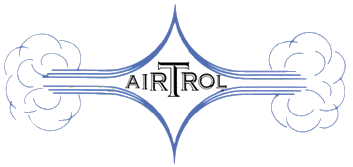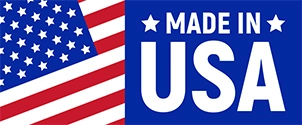The Basics of Pressure Relief Valves
Usage/Applications

Typically, a spring attached to a diaphragm or piston will hold the valve closed at a predetermined pressure limit. If the pressure within the pipe or hose exceeds the predetermined pressure limit of the spring, it will push against the diaphragm and proceed to open the valve. The valve opens wider as more pressure is applied, and will close once the excess pressure is released and pressure within the process component returns to an acceptable level below that of the preset spring pressure.
Pressure relief valves facilitate pressure regulation in a broad range of process systems and equipment used for a variety of gases and liquids, such as:
- Oil and gas pipelines, pumps, and other equipment
- Chemical/petrochemical process systems and refineries
- Steam, air, or gas process systems and equipment
Design Parameters
There are six basic design parameters that must be accounted for when choosing or designing a pressure valve:
- Relief pressure. Relief pressure refers to the amount of potential pressure released from the process flow by the valve.
- Flow requirements. Understanding the maximum flow rate, flow variables, and port configuration are all essential when choosing a relief valve.
- Type of fluid/gas. An effective safety valve must be able to contain and control fluid/gas flow and release. Manufacturers and users must ensure that the correct body type and seal material are utilized for the intended application.
- Size and weight. Many applications require valve components that can fit into tight spaces. The valve material, mounting options, and thread sizes will also impact its weight.
- Materials. Common valve materials include brass, aluminum, plastic, and stainless steel. Each material has its own unique benefits, drawbacks, and material compatibilities.
- Temperature. The source material for a valve component must be aligned with the expected operating temperature of the application. Temperature level can affect the functionality of the valve spring, as well as flow capacity.
Pressure Limits
Pressure limits and specifications for valves that must hold more than 15 psi of pressure are codified in the ASME Boiler and Pressure Vessel Code. Diaphragm-based designs and piston-based designs typically offer different thresholds for maximum source pressure and relief pressure ranges.
System Setup
When considering a new installation, upgrade, or repair, it’s important to consult with a professional that has experience with pressure relief valves. An expert can help you perform a cost-benefit analysis to make the best decision for your current and projected needs.
Pressure Relief Valve Types
There are two common types of pressure relief valves:
- Spring-loaded pressure relief valves. This is the more basic of the two pressure release valve designs. It involves a spring-loaded mechanism that will compress when the system’s internal pressure reaches a preset threshold, thus opening up the release valve for discharge. The spring can be adjusted to collapse under a lower or higher amount of pressure. Most spring loaded designs have a secondary control chamber to enhance the mechanism’s lift.
- Balanced bellows/balanced piston valves. Balanced bellows and balanced piston designs incorporate an advanced spring-loaded action that minimizes the effect of back pressure on set pressure. This design category is recommended for applications that operate within a variable back pressure environment.
How to Select and Size Safety Valves and Pressure Relief Valves
There are six key considerations that may inform the valve selection process:
- Connection size. The size of the valve must be proportional to the size of the inlet and outlet pipes in order to avoid clogging.
- Set pressure. A valve’s set pressure for release should not be higher than the maximum allowable working pressure of the boiler or vessel. Failure to comply with this requirement could lead to a pressure explosion.
- Temperature. The expected temperature range will inform the material used for construction, as well as the valve design layout.
- Back pressure. A valve’s back pressure should generally not exceed 10% of its set pressure.
- Service. Consider the process flow—steam, air, gas, corrosive or non-corrosive, toxic, flammable—to ensure you select an appropriate material that can tolerate any negative effects.
- Required capacity. This consideration is determined by factors such as valve geometry, operating temperature, and relief discharge area. It can be expressed in pounds per hour for steam flow, standard cubic feet per minute for air or gas flow, or gallons per minute for liquid flow.
Relief Valves From Airtrol
Airtrol Components, Inc. has been a family-owned and operated provider of precision miniature pneumatic components since 1977. Our experienced engineers can help you determine the necessary components for your application type. For more information about our pressure relief valves or other products, please contact us today.

